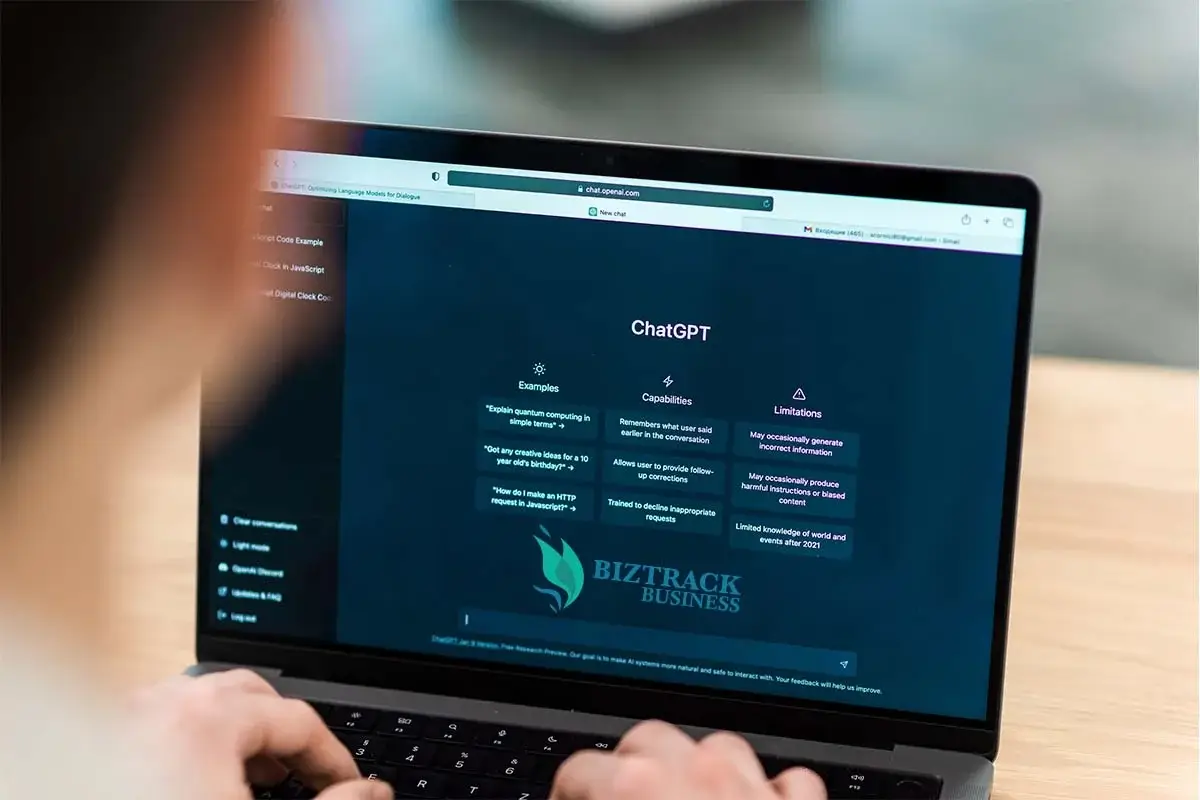
License Consulting Services
August 18, 2023
Start an E-commerce Business
September 20, 2023What is ChatGPT:

Artificial intelligence (AI) continues to break new ground in technology and automation, enabling companies to build smarter systems that can quickly automate tasks and make decisions. So you might be asking “what is ChatGPT?”.
One of the latest advancements in AI is ChatGPT, which officially launched on November 30, 2022. It was met with excitement, confusion, and fear. Many praised the potential of this natural language processing technology, but others worried it would be used for nefarious purposes.
Regardless of the reception, ChatGPT is here to stay, and it’s important to understand precisely what it is and what its arrival means for businesses. Let this article serve as a guide to answering all your burning questions about ChatGPT.
ChatGPT is a natural language processing (NLP) chatbot developed by OpenAI, an AI research company based in California. It uses deep learning and other cutting-edge technologies to create natural conversations with people.
The technology was designed to make conversations more human-like. For example, it can recognise when someone is asking a question or making a request and respond accordingly.
ChatGPT aims to provide users with a conversational interface that feels less robotic than traditional chatbots – one that people are comfortable talking to for extended periods without feeling frustrated.
How does ChatGPT work?
ChatGPT uses natural language processing and deep learning to generate human-like responses to user input. It is based on the GPT-3 (Generative Pre-trained Transformer 3) model, which allows it to generate more accurate and contextually relevant responses than other chatbots.


ChatGPT has been trained on a massive dataset of text from the Internet, which includes various styles of writing, such as conversational, informative, and creative. The training process involved exposing the model to this text and updating its parameters so that it can predict the next word in a sentence given the previous words.
When you input a text to ChatGPT, the model processes it and generates an output based on its training. The output is generated word by word, starting with the first word and continuing until the model predicts the end of the sentence. The model uses the input’s context and its previous predictions to make the next prediction.
Overall, ChatGPT works by using the vast amounts of text data it has seen during training to generate new text similar to text it has already seen. The model uses the input text as a starting point and builds on it to generate the output, making it sound as natural and human-like as possible.
What is natural language processing?
Natural language processing (NLP) is a branch of artificial intelligence that deals with understanding and interpreting human language. It enables computers to analyse, understand, and generate natural languages to interact with humans more effectively.
NLP techniques use text analysis algorithms such as sentiment analysis, topic modelling, keyword extraction, entity recognition, and parts-of-speech tagging to identify patterns in text data. These techniques are used for various applications, including machine translation, question-answering systems, and automated chatbots.
What are the different types of language models and why is GPT-3 significant?
A language model refers to a set of algorithms that can generate human-like language. These models power natural language processing (NLP) systems.
Various language models have been developed over the years to better understand human speech and text. They can be categorised into two main types:
Statistical language models: These models use statistical methods to determine the probability of a word or phrase appearing in the context of a given sentence.
Neural network-based language models: These models use deep neural networks, which are more complex than traditional machine learning algorithms and can better understand natural language.
GPT-3 is the latest in a series of language models developed by OpenAI. It is quite similar to its predecessor, GPT-2, but with some crucial distinctions. GPT-3 is significantly larger, containing 175 billion parameters (GPT-2 has 1.5 billion), making it more powerful and sophisticated than ever.
GPT-3 is also better at understanding context and responding accurately to user input. This makes it ideal for powering ChatGPT conversations and other natural language processing applications.
In hindsight, ChatGPT can be considered a new language model. The technology builds on the capabilities of GPT-3 and takes it to a whole new level by adding conversational capabilities.
Who created ChatGPT?
ChatGPT was built by OpenAI, an artificial intelligence research lab based in San Francisco, California. The lab is known for developing several cutting-edge AI models, including GPT-3, which ChatGPT is based on.
OpenAI was founded in 2015 by Elon Musk, Sam Altman, Greg Brockman, Ilya Sutskever, Wojciech Zaremba, and John Schulman with the goal of promoting and developing friendly AI in a way that benefits humanity as a whole.

